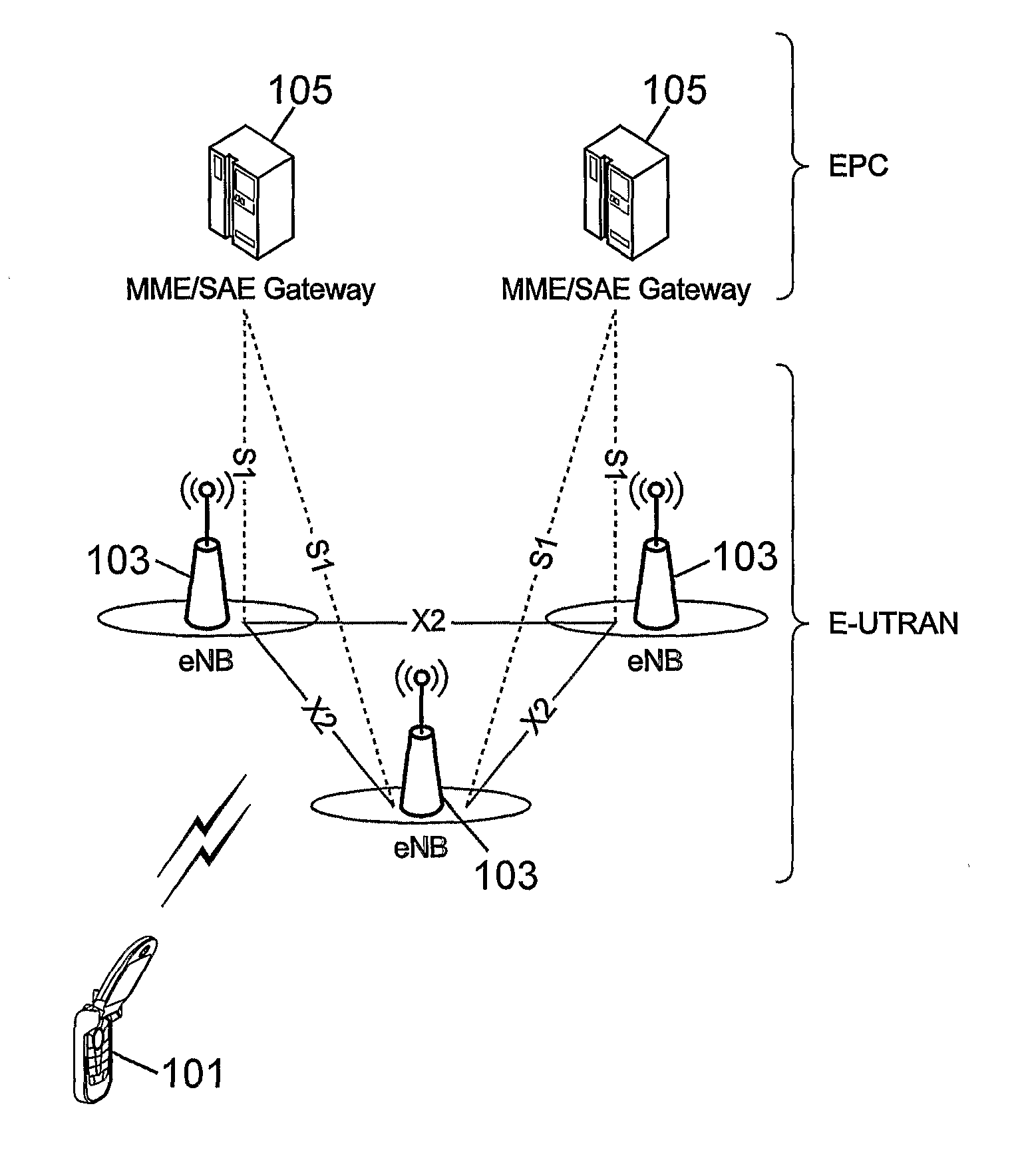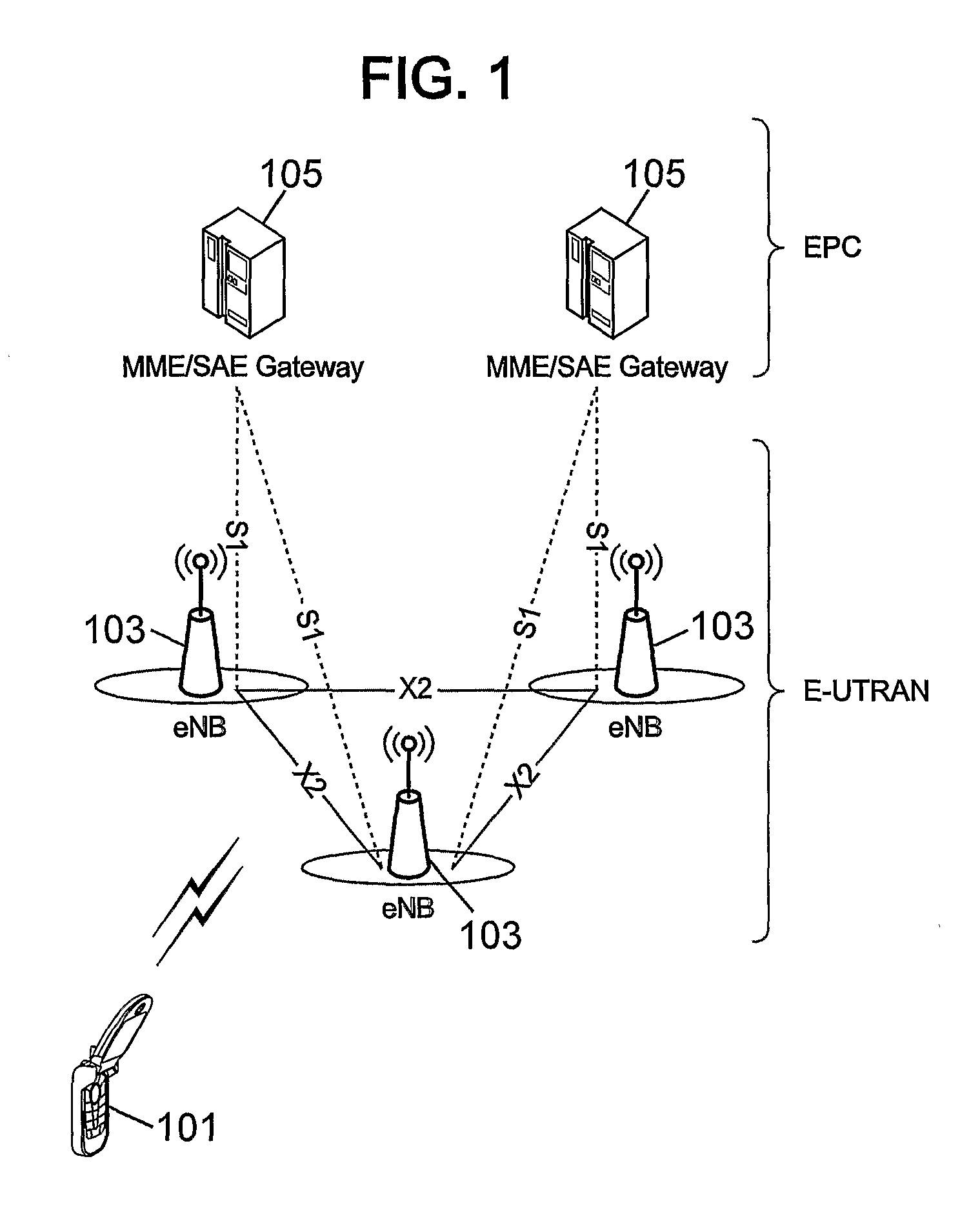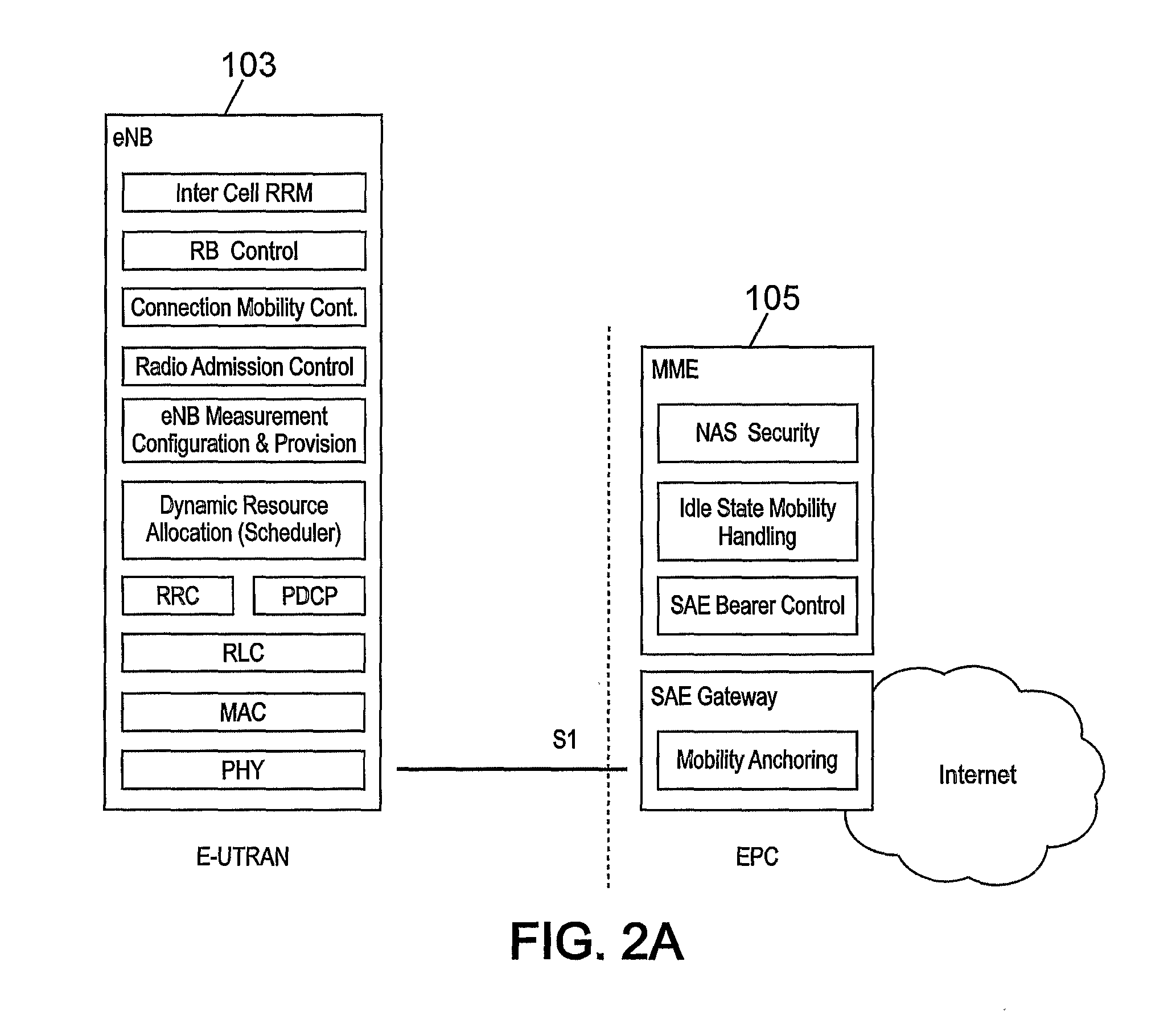Random access channel resource allocation
a technology of random access channel and resource allocation, which is applied in signal allocation, transmission path sub-channel allocation, digital transmission, etc., can solve the problems of ambiguity for the enb, too long delay is not desirable, and generate interference, so as to reduce the waste of uplink or downlink resources and waste resources.
- Summary
- Abstract
- Description
- Claims
- Application Information
AI Technical Summary
Benefits of technology
Problems solved by technology
Method used
Image
Examples
Embodiment Construction
[0074]Reference will now be made in detail to embodiments of the present invention, examples of which are illustrated in the accompanying drawings.
[0075]Embodiments of the present invention are directed to a RACH initial access procedure between a UE and an eNodeB.
[0076]FIG. 9 illustrates a random access procedure in LTE-A between a user equipment UE 101 and a base station eNodeB 103 according to the first embodiment of the present invention.
[0077]In step S101 n preamble signatures for random access transmission in the cell corresponding to eNodeB 103 are grouped into K groups j (j=1, 2 . . . K) where K corresponds to a number of downlink component carriers CC1 to CCK.
[0078]Preamble signatures should portray good autocorrelation properties in order for the eNodeB 103 to obtain an accurate timing estimation for a single preamble; and good cross correlation properties in order for the eNodeB 103 to obtain an accurate timing estimation for different preambles transmitted simultaneously...
PUM
 Login to View More
Login to View More Abstract
Description
Claims
Application Information
 Login to View More
Login to View More - R&D
- Intellectual Property
- Life Sciences
- Materials
- Tech Scout
- Unparalleled Data Quality
- Higher Quality Content
- 60% Fewer Hallucinations
Browse by: Latest US Patents, China's latest patents, Technical Efficacy Thesaurus, Application Domain, Technology Topic, Popular Technical Reports.
© 2025 PatSnap. All rights reserved.Legal|Privacy policy|Modern Slavery Act Transparency Statement|Sitemap|About US| Contact US: help@patsnap.com



